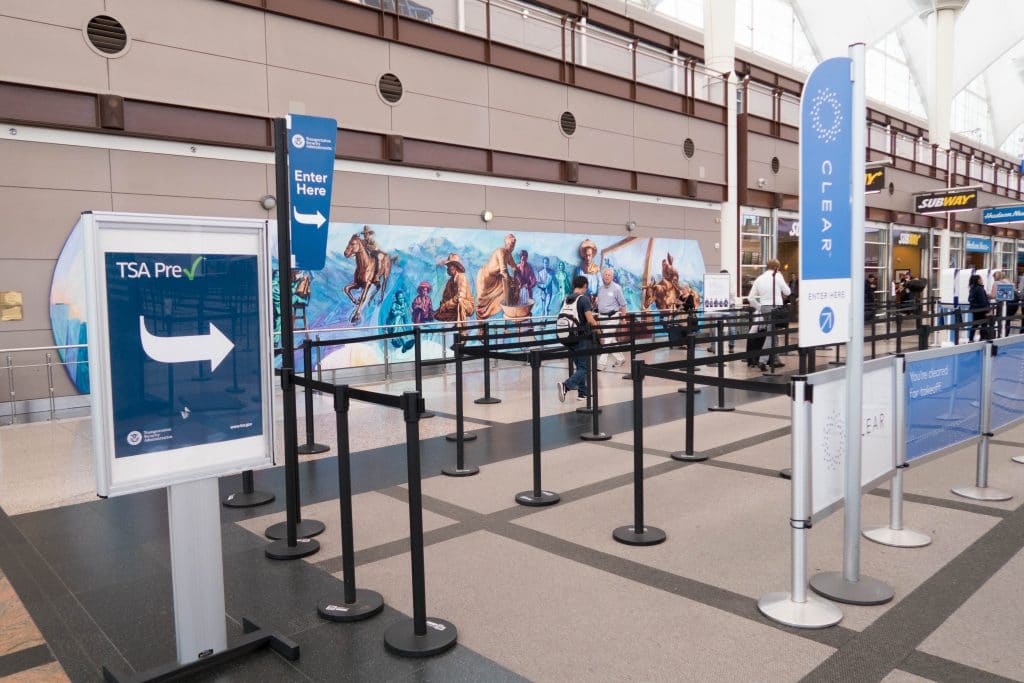Travelers at airports often think security is a big nuisance, as they have to wait for upwards of an hour at a time to get bags screened. Domestic US airports in the last few years have introduced new ways of making this process faster, notably TSA PreCheck and CLEAR. These are in the realm of "Trusted Traveler Programs," where a traveler establishes their permanent credentials ahead of time so queuing at the airport is reduced. In this article, we will break down the benefits and drawbacks of TSA Pre-check, CLEAR, and other trusted traveler programs.
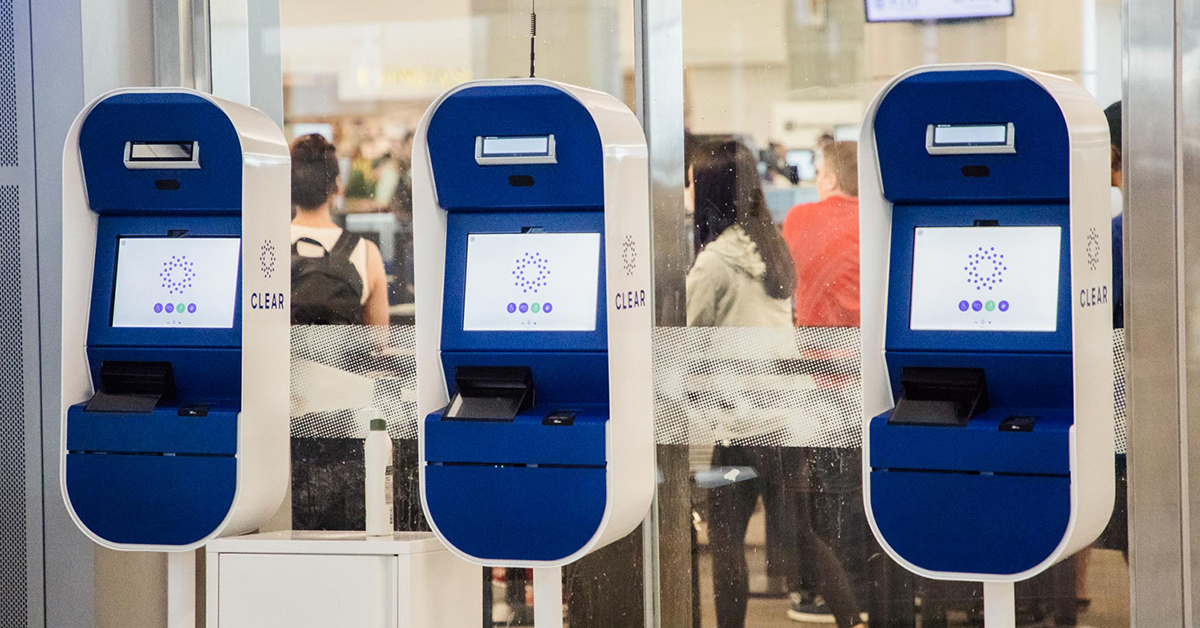
Trusted Traveler Programs (TTP)
Trusted traveler programs have existed since the 1990s, but have become much less exclusive over time. SENTRI (Secure Electronic Network for Travelers Rapid Inspection) is available for travelers to expedite their entrance into the U.S. from Canada and Mexico on a plane or car, and NEXUS is available for those who want to expedite their entrance into the U.S. from Canada alone. Truck drivers can use FAST (Fast and Secure Trade) to enter and exit the US from Canada and Mexico. However, these are primarily immigration-based and do not aid in domestic travel.
TSA PreCheck
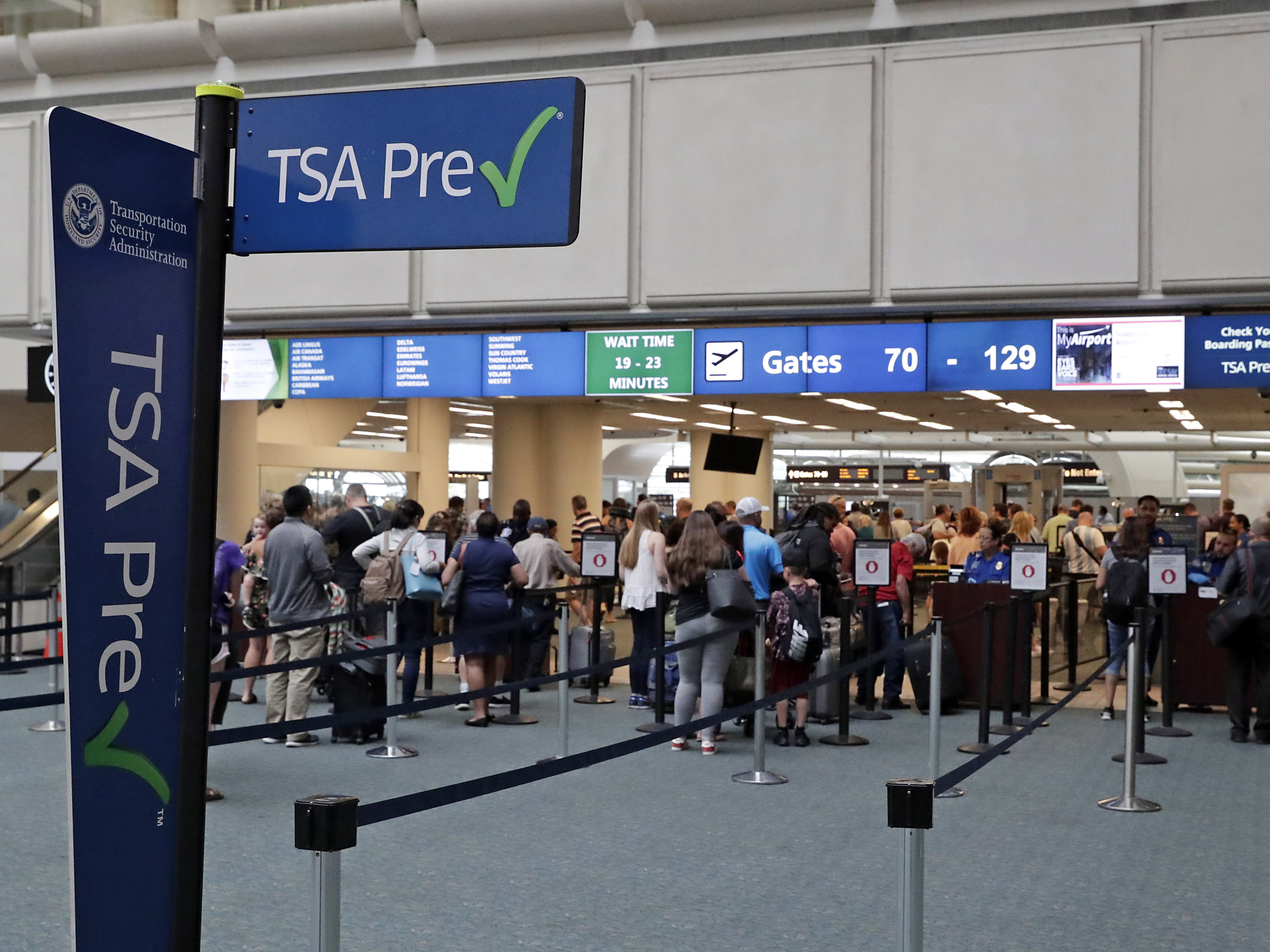
TSA PreCheck — often seen as TSA Pre✓ in airports — was launched in December 2013 by the United States Transportation Security Administration (TSA) as an alternative to the regular security line. The program is available to those who register online and go through the screening process in addition to those who carry the other trusted traveler cards listed above. While PreCheck expedites the security line process by virtue of being selective, it most strongly expedites the screening process by removing requirements of what one must take off, notably shoes and jackets.
TSA notes that in December of 2022, one of the busiest times of the year to travel, 91% of PreCheck passengers waited in security for 5 minutes or less. Salt Lake City (SLC) airport, said to have some of the lowest security wait times, averages 10 minutes, which is still twice as long as PreCheck waits. Since 2013, the program has expanded to 200 airports nationwide, reached 10 million members, and has gained 80 airlines as participating partners.
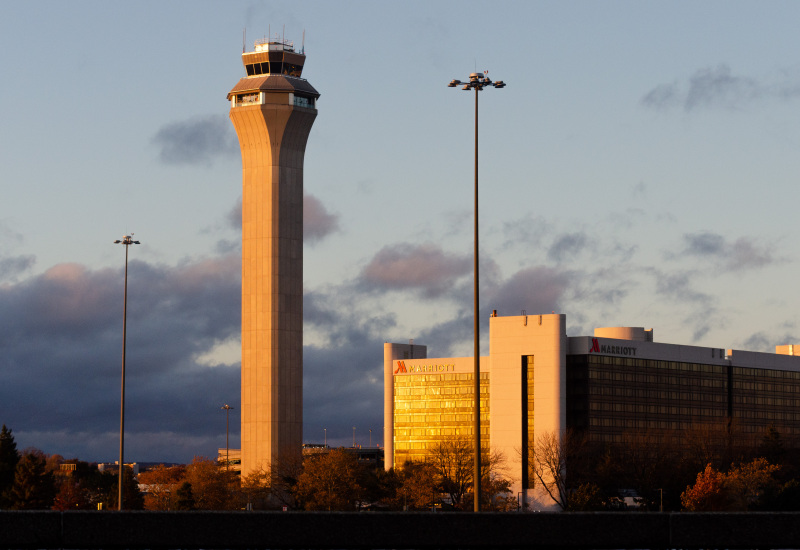
PreCheck's application process is fairly straightforward. Applicants must fill out a short application online to schedule an interview, which takes place at an airport of their choice. Along with the application, the applicant must pay an $85 dollar fee that covers a five-year membership. The interview involves a background check and fingerprinting. After the interview is successfully completed, applicants are given a known traveler number. Typically it takes a few days for the number to be given and the application to be processed, but in rare cases, it may take up to 60 days. Online renewals every five years cost $70, and any U.S. citizen or lawful permanent resident can apply to the program.
For any PreCheck traveler traveling with kids, the kids will also be awarded PreCheck for the flight. Sometimes, TSA PreCheck customers will have their status removed randomly and be forced to use the regular security line, which could be a frustration for some.
CLEAR
CLEAR, on the other hand, operates as a private company that partners with airports to serve as an alternative to the TSA offerings. CLEAR functions very similarly to PreCheck in that it verifies the security of the passenger beforehand, but it does not expedite the bag scanning process like PreCheck does. Instead, passengers skip the queue entirely since their information is already verified, but go through the regular line for bag scanning. In most cases, this affords greater time savings than PreCheck if the queue is long.
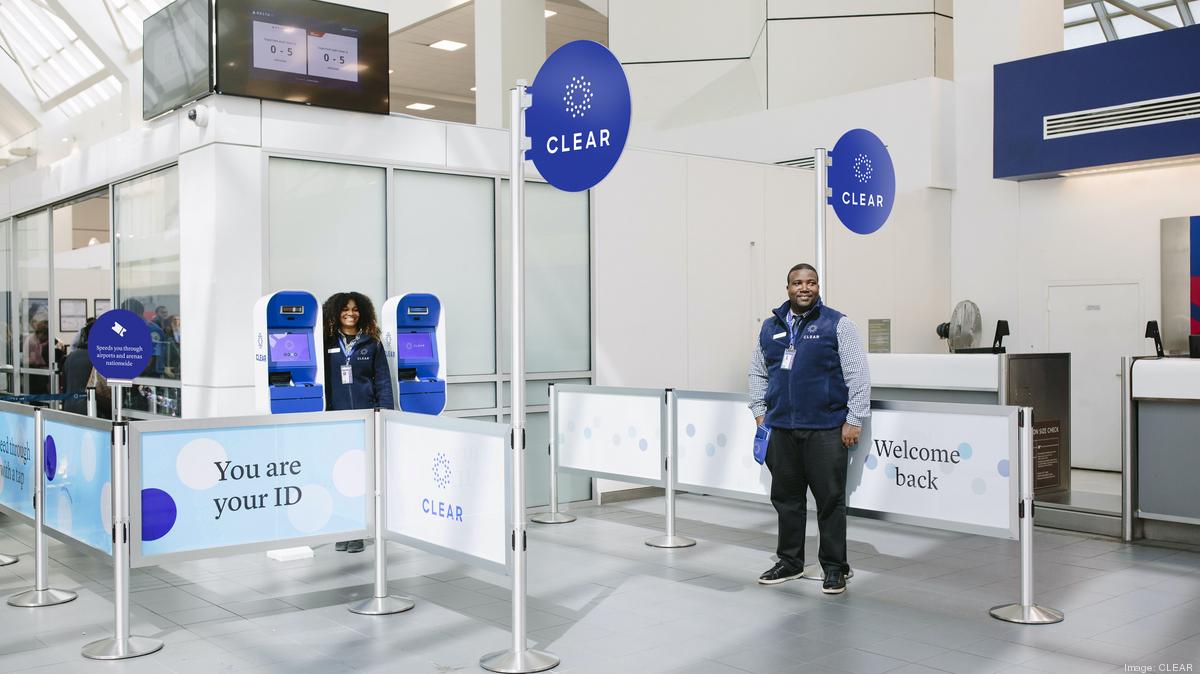
Interestingly, passengers with both PreCheck and CLEAR can use CLEAR to skip the line and then join the PreCheck line for bag scanning so they do not have to remove their shoes, liquids, jackets, and laptops. This combination affords the greatest time savings. Some airports even have separate lines for flyers with enrollment in both programs.
Like PreCheck, CLEAR requires an online sign-up to complete the application. After signing up, passengers can then finalize their enrollment by providing biometric data in-person at any CLEAR location, without the need for an appointment. The cost of CLEAR is much more expensive, however, at $15.75 per month, or $189 per year. Any individual over 18 who is a U.S. citizen or lawful permanent resident can apply.
CLEAR also has the benefit of offering family plans. An individual paying the regular membership fee can add up to three other members of the family for just $60 per member, amounting to almost $130 in savings per person added. Children under 18 do not need to have CLEAR in order to go through the CLEAR line with an individual older than 18 who is enrolled.
One significant drawback is that many airports do not partner with CLEAR yet, limiting when one can use the service. CLEAR is only available in 43 airports, and partners with 15 select entertainment venues such as State Farm Arena in Atlanta, Georgia, and Chase Center in San Francisco, California. For a complete list of airports and venues, visit CLEAR's destination page. Most major US airports are covered, but many medium-sized airports, such as Portland (PDX), Indianapolis (IND), and Burbank (BUR) are not.
Passengers with airline status, such as United Premier 1K member or a Delta Diamond Medallion member can obtain CLEAR free of charge. Some credit cards will reimburse you for the annual membership purchase such as the Amex Business Platinum card. Additionally, students are able to subscribe to clear for just $60 per year as long as proof of enrollment is provided.
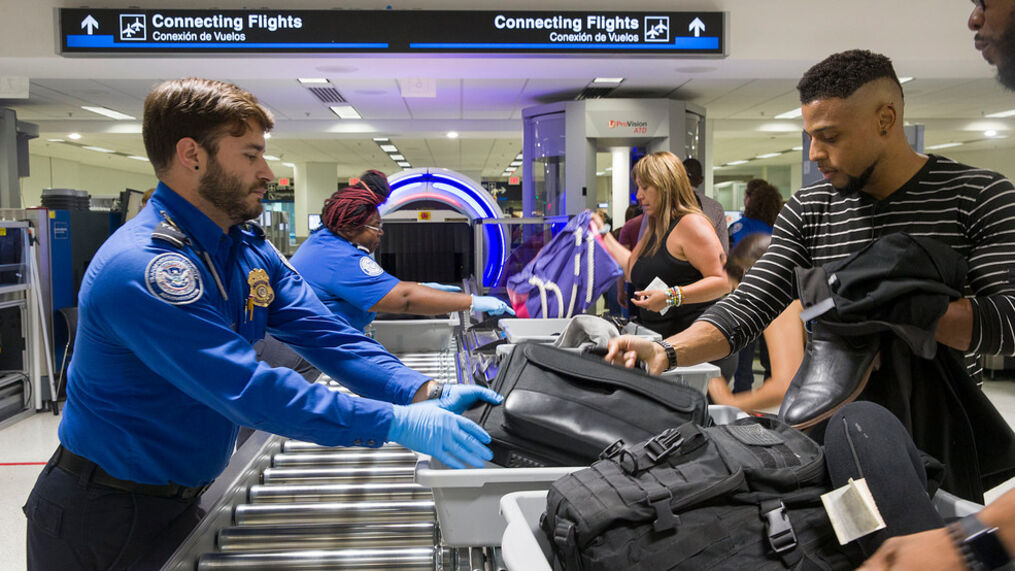
Which is better?
There is no definitive answer here, but for those looking to save money and speed up security, PreCheck is the better option. It is widely available and almost never crowded. Some travel credit cards may even cover the cost of PreCheck if that is a concern. However, for those that travel frequently between big airports or do not care about costs as much, it may be preferable to opt for CLEAR — or even both programs — and save time in the queue and bag scanning processes. In this case, if an airport does not have CLEAR, it is still likely to have PreCheck available, so having both would be helpful.
Personally, I have been traveling with CLEAR recently and it has saved me ample amounts of time. On a recent trip from San Francisco (SFO) to Chicago (ORD), the general security line and PreCheck lines both were upwards of 30 minutes long, but I reached the bag scanner in just five minutes using CLEAR.
Export Development Canada Secures Aircraft Repossession in Nigeria Under Cape Town Convention » Thousands of Flights Impacted as Winter Storm Blair Hits U.S. » Could You Survive a Plane Crash? The Unlikely Science of Plane Crash Survival »
Comments (2)
 Robkxy
In today's rapid world, staying informed about the latest developments both domestically and globally is more crucial than ever. With a plethora of news outlets struggling for attention, it's important to find a reliable source that provides not just news, but perspectives, and stories that matter to you. This is where <a href=https://www.usatoday.com/>USAtoday.com </a>, a top online news agency in the USA, stands out. Our dedication to delivering the most current news about the USA and the world makes us a go-to resource for readers who seek to stay ahead of the curve.
Subscribe for Exclusive Content: By subscribing to <a href=https://www.usatoday.com/>USAtoday.com</a>, you gain access to exclusive content, newsletters, and updates that keep you ahead of the news cycle.
<a href=https://www.usatoday.com/>USAtoday.com </a> is not just a news website; it's a dynamic platform that enables its readers through timely, accurate, and comprehensive reporting. As we navigate through an ever-changing landscape, our mission remains unwavering: to keep you informed, engaged, and connected. Subscribe to us today and become part of a community that values quality journalism and informed citizenship.
Robkxy
In today's rapid world, staying informed about the latest developments both domestically and globally is more crucial than ever. With a plethora of news outlets struggling for attention, it's important to find a reliable source that provides not just news, but perspectives, and stories that matter to you. This is where <a href=https://www.usatoday.com/>USAtoday.com </a>, a top online news agency in the USA, stands out. Our dedication to delivering the most current news about the USA and the world makes us a go-to resource for readers who seek to stay ahead of the curve.
Subscribe for Exclusive Content: By subscribing to <a href=https://www.usatoday.com/>USAtoday.com</a>, you gain access to exclusive content, newsletters, and updates that keep you ahead of the news cycle.
<a href=https://www.usatoday.com/>USAtoday.com </a> is not just a news website; it's a dynamic platform that enables its readers through timely, accurate, and comprehensive reporting. As we navigate through an ever-changing landscape, our mission remains unwavering: to keep you informed, engaged, and connected. Subscribe to us today and become part of a community that values quality journalism and informed citizenship.
 Robkwa
In today's rapid world, staying informed about the latest advancements both locally and globally is more crucial than ever. With a plethora of news outlets struggling for attention, it's important to find a reliable source that provides not just news, but insights, and stories that matter to you. This is where <a href=https://www.usatoday.com/>USAtoday.com </a>, a leading online news agency in the USA, stands out. Our dedication to delivering the most current news about the USA and the world makes us a primary resource for readers who seek to stay ahead of the curve.
Subscribe for Exclusive Content: By subscribing to <a href=https://www.usatoday.com/>USAtoday.com</a>, you gain access to exclusive content, newsletters, and updates that keep you ahead of the news cycle.
<a href=https://www.usatoday.com/>USAtoday.com </a> is not just a news website; it's a dynamic platform that empowers its readers through timely, accurate, and comprehensive reporting. As we navigate through an ever-changing landscape, our mission remains unwavering: to keep you informed, engaged, and connected. Subscribe to us today and become part of a community that values quality journalism and informed citizenship.
Robkwa
In today's rapid world, staying informed about the latest advancements both locally and globally is more crucial than ever. With a plethora of news outlets struggling for attention, it's important to find a reliable source that provides not just news, but insights, and stories that matter to you. This is where <a href=https://www.usatoday.com/>USAtoday.com </a>, a leading online news agency in the USA, stands out. Our dedication to delivering the most current news about the USA and the world makes us a primary resource for readers who seek to stay ahead of the curve.
Subscribe for Exclusive Content: By subscribing to <a href=https://www.usatoday.com/>USAtoday.com</a>, you gain access to exclusive content, newsletters, and updates that keep you ahead of the news cycle.
<a href=https://www.usatoday.com/>USAtoday.com </a> is not just a news website; it's a dynamic platform that empowers its readers through timely, accurate, and comprehensive reporting. As we navigate through an ever-changing landscape, our mission remains unwavering: to keep you informed, engaged, and connected. Subscribe to us today and become part of a community that values quality journalism and informed citizenship.
Add Your Comment
SHARE
TAGS
INFORMATIONAL CLEAR PreCheck TTP Travel Security TSARECENTLY PUBLISHED
 Could You Survive a Plane Crash? The Unlikely Science of Plane Crash Survival
With air travel consistently being heralded as the safest form of public transport, most of us do not board a plane pondering our chances of survival in the event of a crash. But, is it possible to survive one?
INFORMATIONAL
READ MORE »
Could You Survive a Plane Crash? The Unlikely Science of Plane Crash Survival
With air travel consistently being heralded as the safest form of public transport, most of us do not board a plane pondering our chances of survival in the event of a crash. But, is it possible to survive one?
INFORMATIONAL
READ MORE »
 Maldivian Airlines Introduces First-Ever Widebody Aircraft, Plans New China Flights
Maldivian, the government-owned national airline of the Maldives, has just welcomed its first-ever wide body aircraft: the Airbus A330-200. With the new aircraft, the carrier also plans brand-new long haul international flights to China.
NEWS
READ MORE »
Maldivian Airlines Introduces First-Ever Widebody Aircraft, Plans New China Flights
Maldivian, the government-owned national airline of the Maldives, has just welcomed its first-ever wide body aircraft: the Airbus A330-200. With the new aircraft, the carrier also plans brand-new long haul international flights to China.
NEWS
READ MORE »
 Thousands of Flights Impacted as Winter Storm Blair Hits U.S.
Winter Storm Blair has unleashed a huge blast of snow, ice, and freezing temperatures across the Central and Eastern United States.
As of Sunday afternoon, over 6,700 flights and counting have been disrupted. This includes cancelations and significant delays leaving passengers scrambling to change flights and adjust travel plans.
NEWS
READ MORE »
Thousands of Flights Impacted as Winter Storm Blair Hits U.S.
Winter Storm Blair has unleashed a huge blast of snow, ice, and freezing temperatures across the Central and Eastern United States.
As of Sunday afternoon, over 6,700 flights and counting have been disrupted. This includes cancelations and significant delays leaving passengers scrambling to change flights and adjust travel plans.
NEWS
READ MORE »



